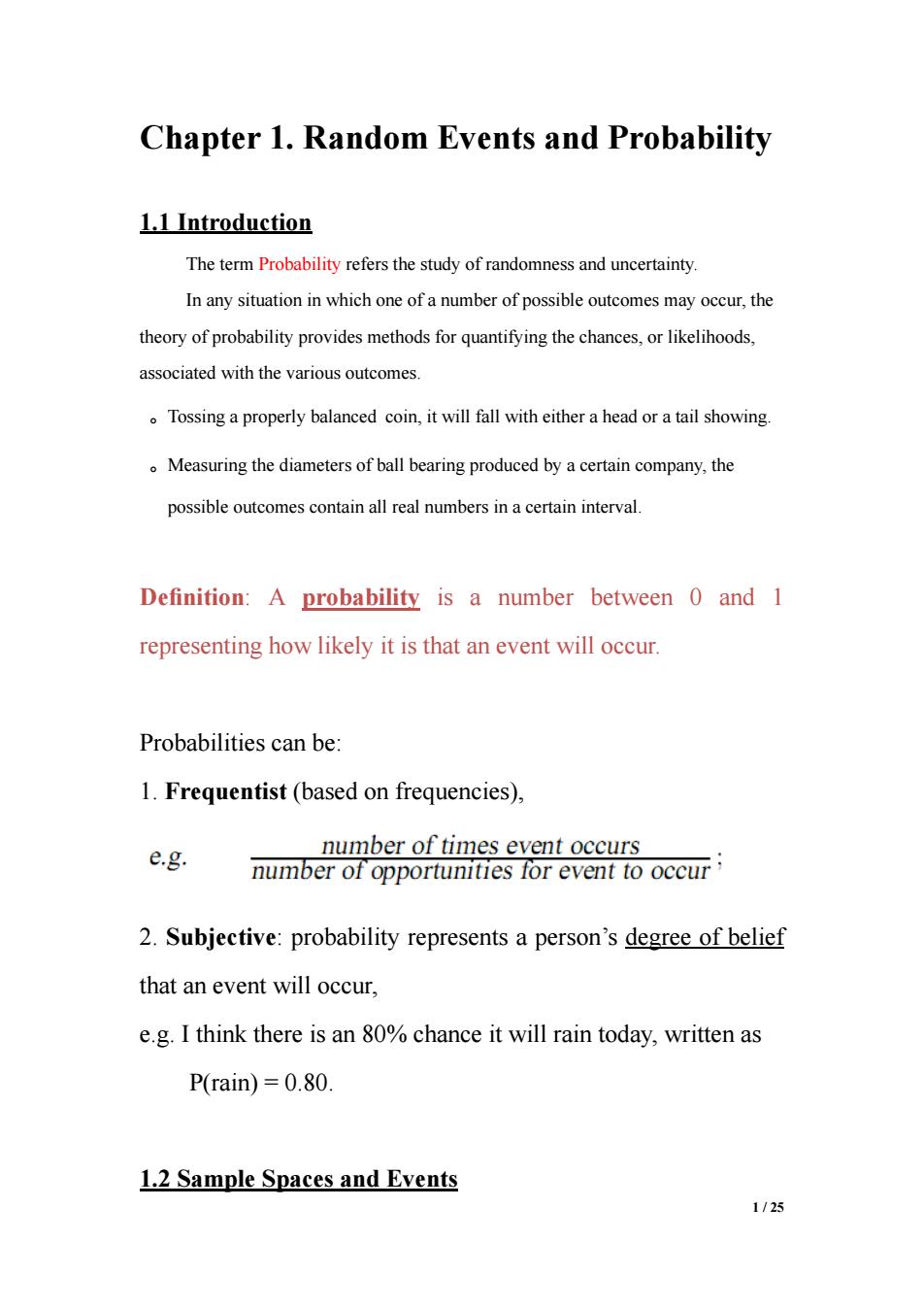正在加载图片...

Chapter 1.Random Events and Probability 1.1 Introduction The term Probability refers the study of randomness and uncertainty. In any situation in which one of a number of possible outcomes may occur,the theory of probability provides methods for quantifying the chances,or likelihoods, associated with the various outcomes. Tossing a properly balanced coin,it will fall with either a head or a tail showing. Measuring the diameters of ball bearing produced by a certain company,the possible outcomes contain all real numbers in a certain interval Definition:A probability is a number between 0 and 1 representing how likely it is that an event will occur. Probabilities can be: 1.Frequentist(based on frequencies), number of times event occurs e.g. number of opportunities for event to occur 2.Subjeetive:probability represents a person's degree of belief that an event will occur, e.g.I think there is an 80%chance it will rain today,written as P(rain)=0.80 1.2 Sample Spaces and Events 1/25 1 / 25 Chapter 1. Random Events and Probability 1.1 Introduction The term Probability refers the study of randomness and uncertainty. In any situation in which one of a number of possible outcomes may occur, the theory of probability provides methods for quantifying the chances, or likelihoods, associated with the various outcomes. 。Tossing a properly balanced coin, it will fall with either a head or a tail showing. 。Measuring the diameters of ball bearing produced by a certain company, the possible outcomes contain all real numbers in a certain interval. Definition: A probability is a number between 0 and 1 representing how likely it is that an event will occur. Probabilities can be: 1. Frequentist (based on frequencies), 2. Subjective: probability represents a person’s degree of belief that an event will occur, e.g. I think there is an 80% chance it will rain today, written as P(rain) = 0.80. 1.2 Sample Spaces and Events